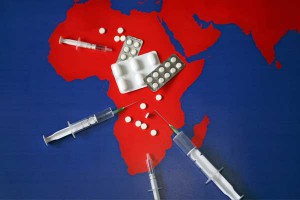07/22/2011 Criminalized States and Terrorist-Criminal Pipelines
By Douglas Farah
The Changing Landscape of West Africa and Latin America
07/18/2011 – While the commodities for weapons trade was lucrative to the participants and costly in terms of human life and the financing of criminal and terrorist organizations, recent developments in the criminal terrorist nexus have radically altered the historic equation of power and influence of non-state actors and criminal states. The driving force in this reshaping of the landscape is the overlap of the drug trade, which increases by orders of magnitude the economic resources available to criminal operatives and their allies.

The numbers are striking. The “blood diamond” trade at the peak of the regional wars in West and Central Africa was valued at about $200 million dollars a year, and was usually significantly below that. Timber added a few tens of millions more, but it is probable that the total amount of the illicit products extracted and sold or bartered on the international market was less than $300 million during peak years, and usually was substantially less. Yet it was enough to sustain wars for more than a decade and destroy the fabric of society of an entire region.
In contrast the United Nations Office of Drugs and Crime (UNODC) conservatively estimates that 40 to 50 tons of cocaine, with an estimated value of $1.8 billion, passed through West Africa in 2007, and the amount is growing.[1] The Pentagon’s Africa Command and other intelligence services estimate the amount of cocaine transiting West Africa is at least five times the UNODC estimate.[2] But even using the most conservative estimate, the magnitude of the problem for the region is easy to see. Using UNODC figures, the only legal export from the region that would surpass the value of cocaine is cocoa exports from Cote d’Ivoire. If the higher numbers are used, cocaine would dwarf the legal exports of the region combined, and be worth more than the GDP of several of the region’s nations.[3]
These emerging networks, vastly more lucrative with the introduction of cocaine, undermine the stability of entire regions of great strategic interest to the United States. The threat is posed by the illicit movement of goods (drugs, money, weapons, stolen cars) and people (illegal aliens, gang members, drug cartel enforcers) and the billions of dollars these illicit activities generate in an area where states have few resources and little legal or law enforcement capacity
According to Antonio Maria Costa, the head of the United Nations Office on Drugs and Crime, this epidemic of drugs and drug money flooding Guinea Bissau, Guinea, Sierra Leone and elsewhere has become a security issue. “Drug money is perverting the weak economies of the region…The influence that this buys is rotting fragile states; traffickers are buying favors and protection from candidates in elections.”[4]
Given this history, the broader dangers of the emerging overlap among criminal and terrorist groups that previously did not work together is clear. Formerly working alone in a business that could yield a few million dollars, these groups now stand to gain significantly more.
The new revenue streams are also a lifeline to Latin American non-state actors that merge the criminal and the terrorist. The two principal beneficiaries are the FARC, now estimated to be the world’s largest producer of cocaine; and the Sinaloa cartel in Mexico, with the world’s largest distribution network. Both pose a significant threat to regional stability in the Western Hemisphere and direct threats to the Homeland.
U.S. and regional African officials say members of both groups have been identified on the ground in West Africa, and that the money used to purchase the product for onward shipment to Europe is remitted primarily to these two groups, often through offshore jurisdictions via European financial institutions.
This means that even as the U.S. cocaine market remains stable or shrinks modestly, these non-state actors will continue to enjoy expanding financial bases as the European, African and Asian markets expand. For the first time in the modern history of the drug war, the United States market may not be the defining market in the cocaine trade, although much of the proceeds of the cocaine trade will continue to flow to organizations wreaking havoc in the Western Hemisphere.[5]
[1] Presentation of Antonio L. Mazzitelli, regional representative, United Nations Office of Drugs and Crime, Regional Office for West and Central Africa, at the Woodrow Wilson International Center for Scholars, May 28, 2009.
[2] Presentation of Peter D. Burgess, Counter Narcotics Project Officer, U.S. Africom, at the Woodrow Wilson International Center for Scholars, May 28, 2009.
[3] Extrapolated by the author from UNODC and Africom data.
[4] Antonio Maria Costa, “Cocaine Finds Africa,” The Washington Post, July 29, 2008, p. A17, viewed at: http://www.washingtonpost.com/wp-dyn/content/article/2008/07/28/AR2008072802466.html
[5] Author interviews with U.S. and African counter-narcotics officials, December 2010 and January 2011.

